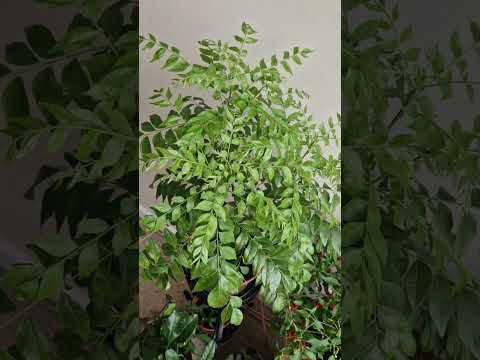Kam Heong Chicken is big on flavour, full of Chinese, Malay, South Asian, Eurasian and Nyonya flavours! Perfect with some rice and a side vegetable dish or salad.
Estimated reading time: 8 minutes
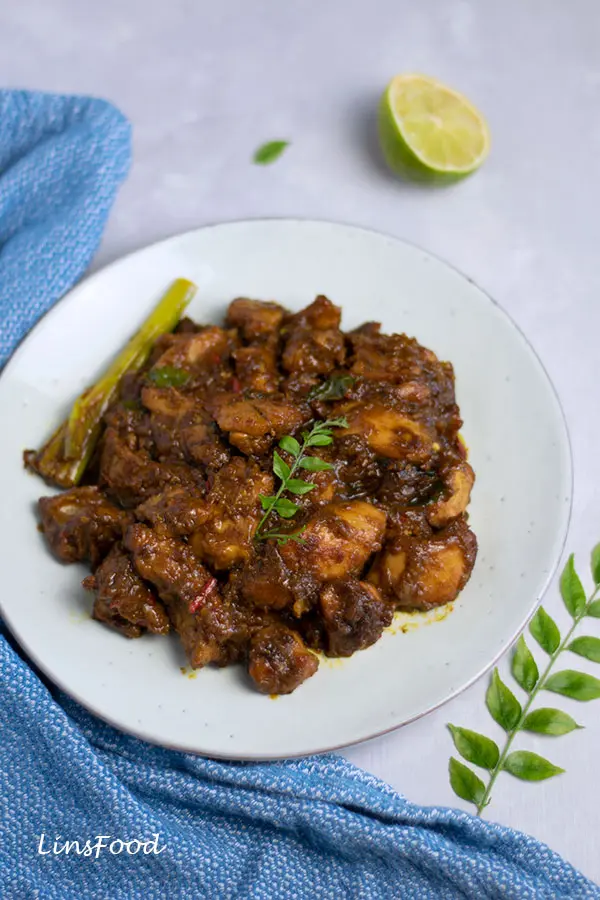
What’s in a Name?
Kam Heong is from the Cantonese dialect.
- Kam = golden
- Heong = fragrant/fragrance
- Kam Heong = translates to golden fragrance
So this has led to some folks calling this dish golden fragrant chicken (or golden fragrance chicken for a grammatically challenged description).
How to pronounce it?
- Kam = come
- Heong = hee-yong, but say it fast, joining the two syllables, as if they are one. The “o” has the same vowel sound as in “on”.
The Beauty of Kam Heong
I’m cooking kam heong chicken today, but you can just as easily use other meat, vegetables or seafood to make a recipe out of the ingredients here. Look out for some alternatives down the road.
Become a LinsFoodie by receiving my emails, and you’ll get new recipes in your inbox when they get published!
So back to kam heong, or kam heong chicken, what we’re cooking today. You’d be hard pressed to find another local dish that personifies the glorious culinary treasure trove that is Singapore and Malaysia.
The name and the ingredients used are a true testament to our unique local population that’s made up of Chinese, Malays, South Asians, Eurasians and Peranakans (aka Nyonyas). I know we’re missing you guys, orang Arab!
Head on over to the main recipes page here to read more about our local ethnic mix.
- The name, we’ve already ascertained, is of Chinese origin, as is the oyster sauce in the recipe.
- Then we have curry powder from the Indians, Pakistanis and Sri Lankans.
- Curry leaves from the south Indians and Sri Lankans.
- Kaffir lime leaves and lemongrass from the Malays, Eurasians and Nyonyas.
- And finally, you have all the other aromatic and umami-ladened ingredients like dried shrimp, soy sauce and such that are shared by all the local cuisines.
I’ll address the specialist ingredients further down this article.
Kam Heong Chicken Recipe
The recipe itself is pretty easy to cook. It requires a few easy parts/steps: marinate, make the spice paste, make the sauce, cook it all up. This is what we’ll be doing:
- Marinate the chicken, overnight if you want, or for a minimum of 1 hour. Your meat will thank you for it.
- Prep work with the usual chopping and stuff. We also combine all the ingredients that will make up the kam heong sauce in a bowl.
- Chop up our kam heong spice paste in a food chopper or with a pestle and mortar.
- Fry the chicken. Traditionally, the chicken would have been coated in a little flour and deep fried. You can do this if you like, or use an air fryer.
But I’ve simplified the method without sacrificing on flavour by lightly frying the chicken pieces in a wok (or deep frying pan) with a little oil. - Then everything else follows in the same pot. We push the browned chicken pieces to the side and fry the paste. This is followed by the sauce and everything else. We cook for another 6-7 minutes or so until the chicken pieces are done. I finish it all off with an optional squeeze of lime juice. Because lime juice makes everything taste better!
That’s it, that’s how we cook kam heong chicken.
The Marinade
This is a simple mix made with:
- light soy sauce
- just a little curry powder
- dark soy sauce
- ground white pepper (black pepper will work too)
- cornflour (corn starch) – some people will use tapioca flour or rice flour for crispier chicken pieces
Kam Heong Chicken Spice Paste
This part of the recipe is very reminiscent of much of South East Asian cooking, in this instance, Malay, Nyonya and Eurasian. We make a spice paste from the onion, garlic, chilli, lemongrass and dried shrimp.
This paste will then be fried after browning the chicken.
Kam Heong Sauce
We mix together some of the ingredients to form our homemade kam heong sauce. This is what we’ll need:
- curry powder
- light soy sauce
- sweet soy sauce
- oyster sauce
- turmeric powder
Ingredients
Let’s take a look at the more traditional ingredients that you may not be familiar with. Any suggestions on where to buy them is largely aimed at folks who are not living in Asia.
Curry Leaves
Click here to read more about curry leaves on LinsFood. These leaves are used extensively in South Indian and Sri Lankan cooking.
They lend an inimitable aroma that’s herbal and woody at the same time, and unfortunately, that cannot be substituted. I’ve been growing my own curry leaves for almost 30 years as they are something I cannot live without. See my YouTube short above.
If you have access to a South Asian grocer, you may be able to get them. Failing that, go online to do a search for fresh sprigs of curry leaves.
Dried curry leaves have such a faint aroma that I usually tell my readers and students not to bother, but you might want to give it a try anyway. They can be found in larger supermarkets here in the UK, and perhaps the same goes for where you are.
If you can’t get them, you could just finish your kam heong chicken with some freshly chopped coriander leaves (cilantro) for just a little more aroma.
Kaffir Lime Leaves
These are optional but I love using them to further enhance the South East Asian slant of our golden fragrant chicken. Doesn’t get more aromatic then kaffir lime leaves, does it?
Interestingly, these guys are easier to find in the UK than curry leaves.
Dried Shrimp
Click here to read more about dried shrimp (udang kering in Malay) and substitute ideas.
Dried shrimp is a must when cooking kam heong recipes. Its briny, umami-filled characteristic plays a big role in the flavour base of our dish. So you need to get your hands on it.
Click here for my global Amazon affiliate link to get dried shrimp.
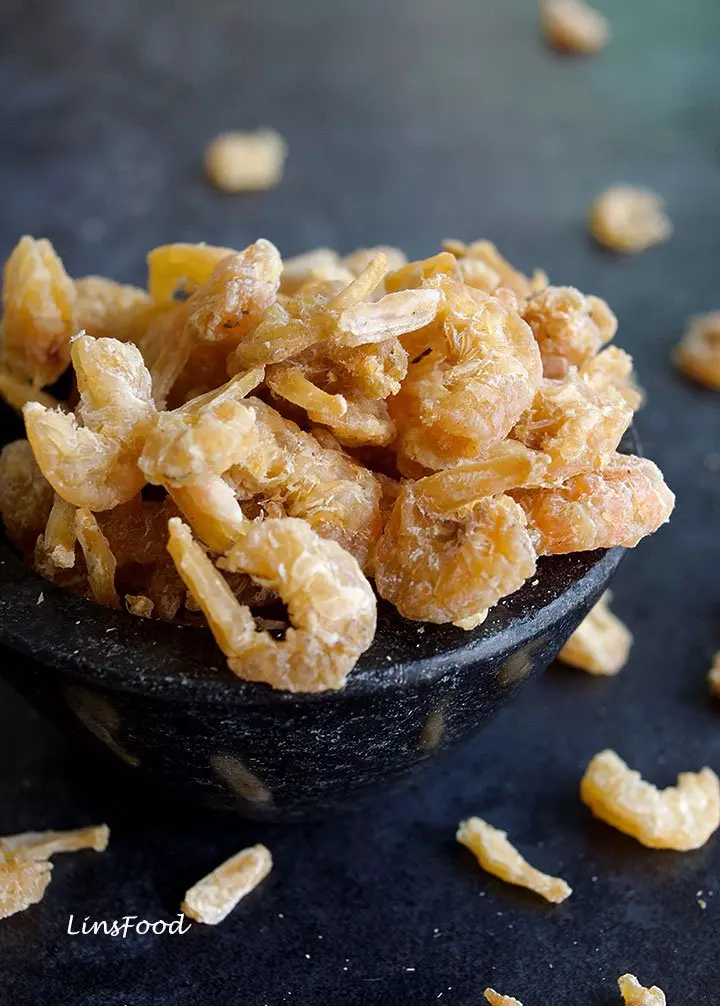
Curry Powder and Turmeric
Any generic curry powder will do. Mild, medium or hot. Garam masala will work as an alternative too.
We also add turmeric powder to our kam heong chicken for yet another piece of the fragrant puzzle.
Oyster Sauce
Oyster sauce is very easily available these days and by different brands too. I suggest you always check the ingredients list to ensure that you buy one with the most oyster extract.
Some brands only have as little as 0.3% with lots of other flavourings added. Many of them will contain MSG, so look out for that too. If truth be told, while I prefer not to consume MSG, I have no problem if the odd ingredient I use has it.
Soy Sauce
Kam heong chicken uses the whole range of soy sauces that are a staple in Singaporean an Malaysian cooking.
We’ve got the regular light soy sauce, dark soy sauce and sweet soy sauce, also called kicap manis. These are all easily found in large supermarkets and should be essential in your SMR pantry.
A little Malay language fun
- Kicap = soy sauce
However, it’s derived from ketchup, so in Malay, kicap tomato is tomato ketchup. - Manis = sweet
- Masin = salty, and this refers to light soy sauce, so kicap masin.
Aromatics
Besides the curry leaves and kaffir lime leaves mentioned above, we’ve got onion, garlic, chillies, and lemongrass. Interestingly, traditional kam heong chicken doesn’t use ginger, but this does differ from family to family.
All easily available ingredients, right? How much chilli you use will determine the heat level of your kam heong chicken. I like a little spice in mine so tend to go for a handful of cili padi (bird’s eye chili).
You can use any red chillies you like and mild or hot, that’s up to you.
The Chicken
I thought I’d better touch on this.
This is like a stir-fry dish. We want small, bites-sized pieces of chicken to cook kam heong chicken. My favourite part of a chicken is the thigh, and that’s what I’m using here. You could also use chicken breasts, if you prefer.
That being said, slightly bigger pieces of chicken, on the bone, would also work here. Think about licking those bones clean when you’re done picking the meat! So chicken drumsticks and perhaps, even wings, would work beautifully.
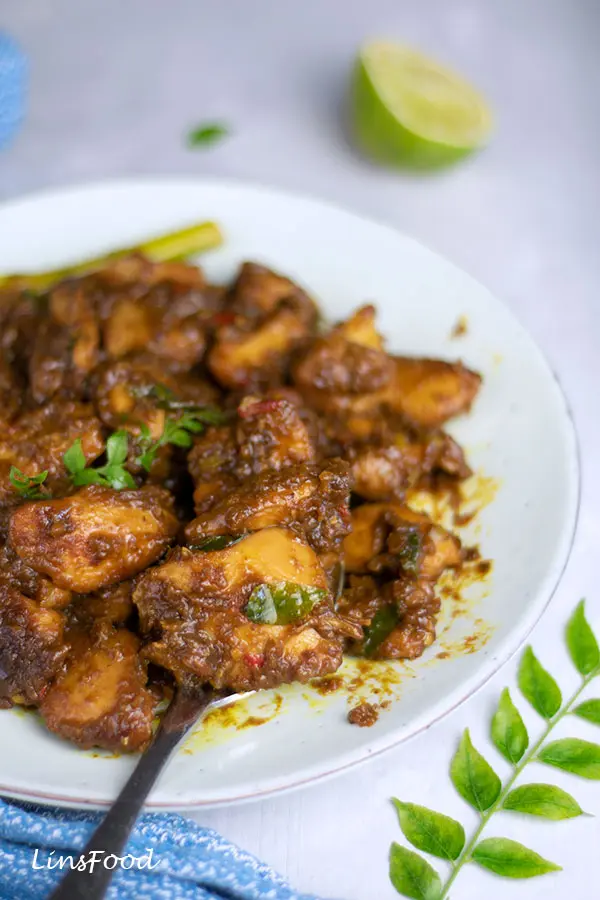
Vegetarian Kam Heong
I make vegetarian kam heong recipes all the time. In fact, I’m cooking one tonight, as Sapphire is home from Uni for a week. By now you know my 4 kids are vegetarian.
My favourite is Kam Heong Tofu, but I also very frequently use vegan chicken pieces for the the kids for a Vegan Kam Heong. But we have to leave the dried shrimp and oyster sauce out. So that, LinsFoodies, is a recipe for another day!
What about seafood, you ask? Anything will work: prawns, clams, squid, etc. Like I said earlier, stay tuned for a couple more kam heong recipes.
For now, shall we get in the kitchen and cook up some kam heong chicken?
If you enjoy the recipe and article, drop me a comment and let me know. Feeling like a star? Don’t forget that 5-star rating!😉
If you make this recipe, post it on Instagram and tag me @azlinbloor and hashtag it #linsfood.
Lin xx
More Chicken Favourites
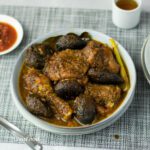
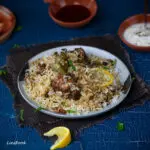
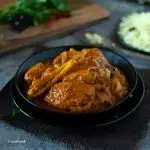
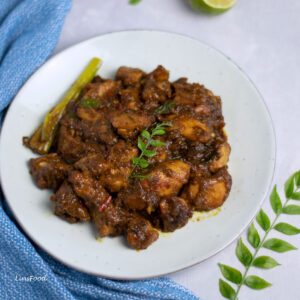
Kam Heong Chicken
Equipment
- 1 chopping board
- 1 knife
- 1 wok or deep frying pan (skillet)
- 1 small bowl
- 1 medium bowl
- 1 spatula
Ingredients
The Marinade
- 1 Tbsp light soy sauce
- 1 Tbsp dark soy sauce
- ½ tsp curry powder
- ⅛ tsp ground white pepper black will work too
- 1 Tbsp cornflour corn starch in the US
Kam Heong Spice Paste
- 1 medium onion about 120 – 150g (about 5 oz) pre peeled weight
- 2 medium cloves garlic
- 3-5 bird's eye chillies
- 1 stalk lemongrass
- 2 Tbsp dried shrimp
Kam Heong Sauce
- 1 Tbsp light soy sauce
- 1 Tbsp sweet soy sauce
- 1 Tbsp oyster sauce
- 1 Tbsp curry powder
- 1 Tbsp turmeric powder
Everything Else
- 500 g chicken in bite-sized pieces 750g (1.6 lb) if on the bone
- 1 stalk lemongrass
- 3 Tbsp vegetable oil or any flavourless oil
- 4 sprigs curry leaves
- 4 kaffir lime leaves
- 60 ml water
- juice of ½ a lime about 1 Tbsp
Instructions
Marinate the Chicken – Video's coming!
- Place the chicken pieces into a bowl and add all the marinade ingredients.
- Mix well and rub the marinade all over the chicken, cover, and leave to marinate for 1 hour or overnight.If marinating overnight, place the chicken in the fridge and be sure to get the chicken out at least 30 minutes before you start cooking.
Make the Spice Paste – when you're ready to cook
- Peel and quarter the onion and set aside.Peel the garlic and leave them whole alongside the onion.Cut the chillies into 2 pieces and drop into the food chopper.Trim off the end of the lemongrass and cut the bottom half into rings and drop into the chopper. Click here to find out how to use lemongrass.Give the dried shrimp a quick rinse and drop into the chopper. I don't bother soaking dried shrimp unless I'm using them raw.
- Chop the chillies, lemongrass and dried shrimp until they are fairly fine.We start with these ingredients to give them a head start. The chillies especially, can be stubborn and remain on the large side.
- Add the garlic and run the chopper again for a few seconds. You may need to dislodge the bits on the side with a spoon.
- Add the onion quarters and process everything until you have a fine paste. Set aside until needed.
Kam Heong Sauce
- Mix everything together in a small bowl and give it a good stir. Set aside.
Let's get Cooking
- We have 1 more lemongrass to prepare. Top and tail it (click here to see how).That means trim off the hard bottom end of the lemongrass and chop off the top part, leaving about 4-5 inches of the thicker bottom half.Now, using the back of your knife, bash down hard on the thick bottom end, crushing it and splitting it slightly. This is how we bruise a lemongrass.
- Heat the oil on medium-high in a wok or deep frying pan (skillet) and fry the chicken pieces, for 5 minutes, flipping them a few times to get them brown all over, with a few crispy edges.
- Lower the heat down to medium and push the chicken pieces to one side of your wok. You should have enough oil at the bottom of your wok. If not, add another tablespoon of oil and let it heat up for 30 seconds.Tip the spice paste, bruised lemongrass and curry leaves in and fry for 2 minutes, stirring.
- Add the sauce, water and lime leaves, stir and bring to a simmer and cook for 1 minute.
- Add the chicken, stir to coat, then reduce the heat to low and cook for 5 minutes more until the chicken is cooked through. Small pieces don't take long at all.Check seasoning and add some salt if you need it, but I doubt if you would.Turn the heat off, squeeze the lime juice all over and mix.Leave to rest for 5 minutes before serving up.

